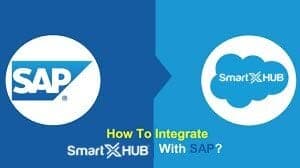The purpose of this blog is to serve as a central point of entry through which we would like to provide you with information and various aspects of the integration framework for SAP.
The meaning and importance of integration or the question, why integration is needed?
In a daily business life, the subject of integration plays an increasingly important role. Integration affects many areas of a company, such as business cooperation, integration of employees from other countries, connecting business units, and a very important aspect is the integration of different software systems and components that best enhance your company processes.
In this blog, we will specifically look at the topic of integrating software systems and components to show how they can be connected for data exchange. Especially in times of digitalization, companies are increasingly facing the challenge of how to connect different software components, such as different systems, mobile applications, integration of sensors, and other technologies to become a more automated, intelligent and connected company.
Which kind of interfaces are available in SmartX HUB for SAP data exchange?

SmartX HUB is a very open and flexible Asset Management system that offers various possibilities of data exchange across system boundaries.
For data exchange with SAP, this interface, so called Application Programming Interfaces (APIs), are present in the system:
SmartX HUB API
The SmartX HUB API contains objects and methods that enable developers to read, write, update, and remove data objects on database level, including master data.
Data Exchange and Connection of SAP System in General
The integration framework for SmartX HUB is a SOAP based solution to design integration flows for exchanging data between different systems.
In contrast to the classic integration of software components through in-house development and direct use of the existing API’s, various components / services already exist in the integration framework that simplify integration tasks, such as integration services, security functions, message flow control and monitoring, error handling, easy adjustment when APIs change, a light-weight business process management and more.
The integration framework for SmartX HUB is an integral part of Smartx’s asset management and logistics solutions and can be used in every customer installation whatever the installation is, on premise or in the cloud.
What is the integration framework in general and why to use it?
The integration framework provides an infrastructure that allows for the communication and interaction between software applications such as SAP solutions, as well as non-SAP systems; whether they are cloud applications or on-premise applications.
The purpose of the integration framework is to provide data mapping and transformed information to the software applications involved. This means that definitions are provided for sender- and receiver systems, the mapping of data and their values, which data is to be exchanged, the specified time intervals or prompts for when the data exchange should take place, and much more.
Knowledge of IT, XML, JavaScript as well as basic SQL, and a general understanding of the data structure of SmartX HUB are sufficient.
What is SOAP (Simple Object Access Protocol)?
SOAP ( Simple Object Access Protocol) is a message protocol that allows distributed elements of an application to communicate. SOAP can be carried over a variety of lower-level protocols, including the web-related Hypertext Transfer Protocol (HTTP). SOAP defines a header structure that identifies the actions that various SOAP nodes are expected to take on the message, in addition to a payload structure for carrying information. The concept of routing a message through a string of nodes that perform different functions is how SOAP supports things like addressing, security and format-independence. Essentially, the headers identify roles, which in turn provide the SOA features which SOAP then routes to. Stringing messages through a sequence of steps is uncommon in today’s microservice-centric development environments.
SOAP is an integral part of the service-oriented architecture (SOA) and the Web services specifications associated with SOA. Because it allows the sender to create a message route based on the logical services that have to be applied to the message on the way to its destination, it lends itself to providing secure and compliant connections, controlling access, offering reliable delivery and failure recovery, and supporting dynamic service discovery. SOA without SOAP is difficult to imagine.
Case 1- Asset Maintenance Request with SAP - Mining Company
The Company runs 10 APIs to connect SAP to Smartx HUB. The basic interfaces exchange data below:
- Item Category – creation – Using SAP Item type, the API creates and enable all categories of item types in SmartxHUB
- Item Locations – SAP send all locations and zones to Smartx HUB
- Departments – SAP updates all departments of SmartxHUB using APIs
- Failures types- SAP creates and manages all types of Failures and Priorities to repair an item to Smartx HUB APIs
- Item Creation – SAP creates all items at Smartx HUB automatically using APIs. In case a Name or other fields changes in SAP, the APIs updates the data at Smartx HUB master item list.
- Exchange Maintenance Request- SmartXHUb and SAP exchange maintenance request and tickets number using 2 specifics APIs.
Case 2- Supply Chain Integration with SAP - Hospital
The Company runs the RFID Printers to create a Smart Labels for drugs. The basic interfaces exchange data below:
- Printer Instructions – The APIs connects SAP to Smartx HUB. SAP gives a complete information to create serialized items at Smartx HUB, including Lot, expiration date, SAP material movements, EAN code, users and many others. Based on this API, Smartx HUB create an item and RFID labels and send to printers.
- Authentication APIs – SAP manages the movements of items using its transactions. The SAP logistics transactions releases the physical movements from warehouse to surgical rooms.


